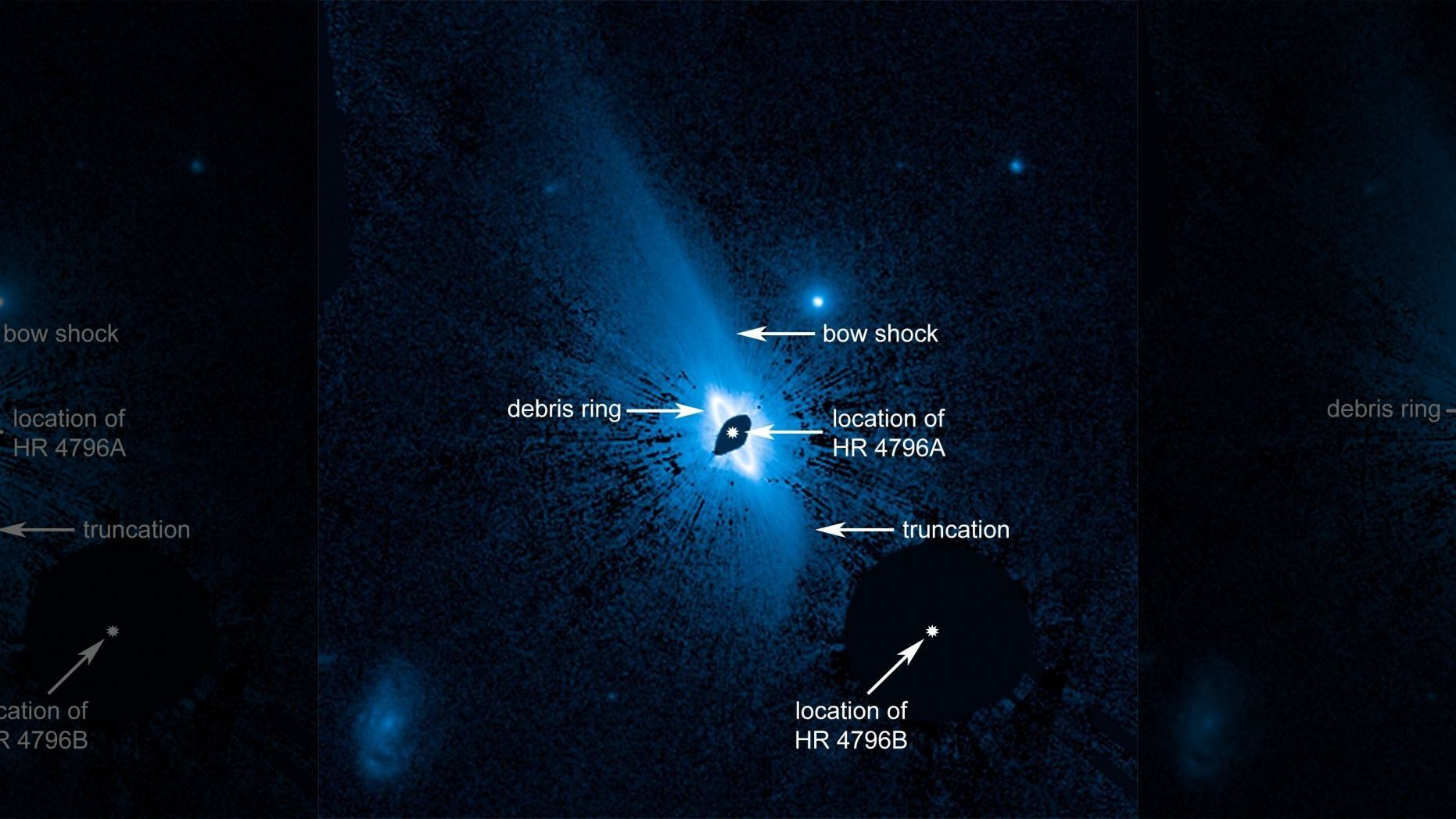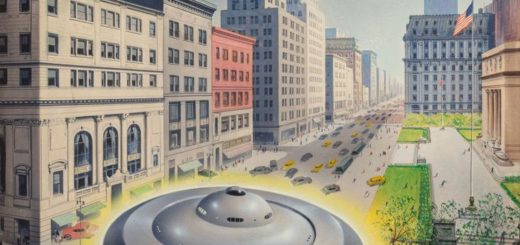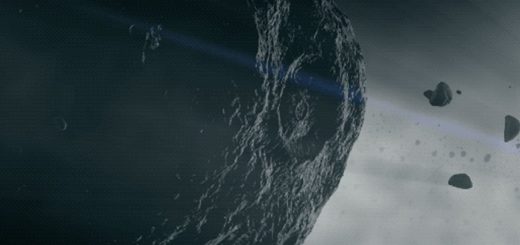Giant alien planet may lurk inside star’s lopsided dust structure

The Hubble Space Telescope recently discovered a star surrounded by a huge dust structure that stretches about 150 billion miles across.
Scientists suspect that a giant planet is also embedded inside of the debris, and so the structure could shed insights into how planets are formed, NASA officials said in a statement.
“The debris field of very fine dust was likely created from collisions among developing infant planets near the star, evidenced by a bright ring of dusty debris seen seven billion miles [11 billion kilometers] from the star. The pressure of starlight from the star, which is 23 times more luminous than the sun, then expelled the dust far into space,” NASA officials said in the statement. [In Pictures: The Strangest Alien Planets We’ve Found So Far]
But there are strange subtleties to the dust ring’s structure. NASA describes it as looking like an inner tube that got hit by a truck. That’s because the dust is much more extended on one side of the star than it is on the other side. Perhaps, scientists suggest, the host star is plowing through the gas that makes up the interstellar medium, creating a shock wave that is affecting the dust. Or, the star’s red dwarf binary companion, HR 4796B — which is roughly 54 billion miles (87 billion km) away — is exerting a tidal influence.
More From Space.com
In Pictures: The Strangest Alien Planets We’ve Found So Far
“The dust distribution is a telltale sign of how dynamically interactive the inner system containing the ring is,” stated lead researcher and astronomer Glenn Schneider of the University of Arizona, Tucson. He used Hubble’s Space Telescope Imaging Spectrograph to examine the dust in more detail.
“We cannot treat exoplanetary debris systems as simply being in isolation,” he added. “Environmental effects, such as interactions with the interstellar medium and forces due to stellar companions, may have long-term implications for the evolution of such systems. The gross asymmetries of the outer dust field are telling us there are a lot of forces in play — beyond just host-star radiation pressure — that are moving the material around. We’ve seen effects like this in a few other systems, but here’s a case where we see a bunch of things going on at once.”
About 40 debris disks have been photographed around stars to date, mostly through Hubble observations. Evidence of the first debris disk around a star (Beta Pictoris) was discovered in 1983, using NASA’s Infrared Astronomical Satellite. In 2015, NASA officials said Beta Pictoris was the only known system that has a gas giant planet embedded in the dust.
The new work was detailed in The Astronomical Journal in February.



 Creators of mankind
Creators of mankind Description of “Tall white aliens”
Description of “Tall white aliens” Where they came from?
Where they came from? About hostile civilizations
About hostile civilizations The war for the Earth
The war for the Earth “Tall white aliens” about eternal life
“Tall white aliens” about eternal life Video: “Nordic aliens”
Video: “Nordic aliens” Aliens
Aliens Alien encounters
Alien encounters The aliens base
The aliens base UFO
UFO Technology UFO
Technology UFO Underground civilization
Underground civilization Ancient alien artifacts
Ancient alien artifacts Military and UFO
Military and UFO Mysteries and hypotheses
Mysteries and hypotheses Scientific facts
Scientific facts


















